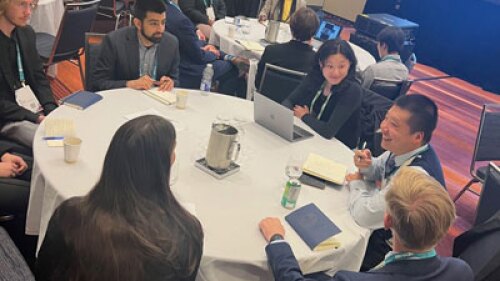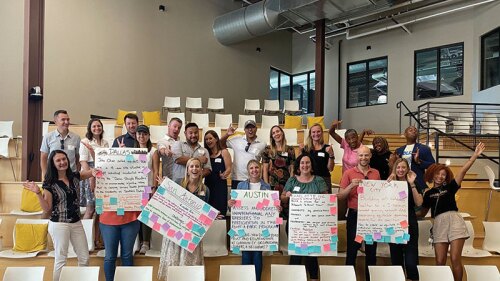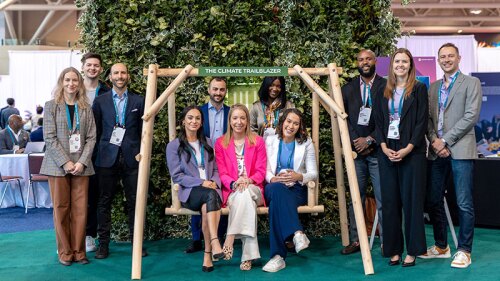The story of Wynwood’s transformation from a drab, postindustrial pocket tucked in Interstate 95’s shadow into a hip, iconic Miami neighborhood—one of the must-see places in the United States—is something of a real estate fairy tale.
Visionary developer and art collector Tony Goldman saw the equivalent of an empty canvas when he purchased a series of single-story, windowless warehouses in Wynwood, once a busy industrial and manufacturing center north of downtown Miami. His company, Goldman Properties, invited graffiti artists to paint the building exteriors, turning the walls into exquisite murals expressing both creativity and whimsical imagination and catapulting Wynwood onto the international stage. Launched in 2009, the Wynwood Walls project continually showcases artistic work from all over the world and, along with Art Basel Miami, helped solidify Miami’s reputation as global destination for arts and culture.
Over the past decade, Wynwood has become a hub for the arts and art-related businesses, including private art galleries, art storage facilities, tech startups, and studios and showrooms of designers, photographers, and other creative workers. Locally owned eateries and coffee shops have taken hold to cater to the neighborhood’s growing workforce.
Now, Wynwood is on the cusp of change once again as projects take shape aiming to serve a group so far missing from the neighborhood’s special mix of art and commerce—a residential population. Housing is what local developers and activists say will fulfill a long-held vision of the neighborhood as a mixed-use, pedestrian-oriented community with a 24/7 population.
“So far, there is no residential element in Wynwood; there are no regulars,” said ULI member Andrew Frey, founder and principal of real estate development and consulting firm Tecela, who led a tour of the area during the ULI Florida Summit in June. “Residential is needed to complete the neighborhood.”
The residential population of Wynwood is sparse, with only 320 residents scattered throughout a 40-block area. Critical to the effort to build a residential population in Wynwood was a multiyear effort by David Polinksy and other Miami developers to change Wynwood’s zoning to encourage more residential development while preserving elements of the neighborhood’s arts/industrial character. Before Miami rezoned Wynwood last year, designating it as the city’s first Neighborhood Revitalization District (NRD), the only residences permitted in the neighborhood were live/work lofts in which tenants had to meet strict requirements to prove their homes were also their workplace.
Now, purely residential buildings are permitted, and in some cases parking requirements can be waived for a payment into a public benefit trust fund. The new law also permits greater housing densities, which were raised from 36 or 65 units per acre depending on the zoning to 150 units per acre across the board. The new allowable density rule is “the real centerpiece of the new zoning,” Frey said.
For Polinsky, managing partner of Fortis Development Group, the NRD-1 zoning represents a victory for small-scale developers who want to see Wynwood reach its potential as a neighborhood. “It’s an amazing place, but [still] incredibly broken,” he said during a panel discussion the day after the tour. “It has amazing potential, but serious challenges.” Those include narrow sidewalks, limited parking, no primary or secondary schools, and a dearth of green space and shade trees. On weekends, Wynwood can feel deserted and unsafe, Polinsky said.
The new zoning also aims to enhance the pedestrian experience and expand housing options. Polinsky’s goal—to take advantage of infill opportunities to offer choices beyond high-rise condominium towers or sprawling villas, the city’s dominant housing forms—aligns with this vision. Polinksy and his partners developed 250 Wynwood, an 11-unit building whose design takes inspiration from the murals that line Wynwood’s streets. The art woven throughout the building includes custom-painted murals that adorn the ceilings of ten-foot-deep (3 m) balconies on each of the street-facing units.
Because he submitted the proposal for 250 Wynwood before the zoning change, Polinksy, a Wynwood Business Improvement District board member, was at first unsure whether the project would be completed. When the new zoning was adopted in fall 2015, he began to breathe easy and formulate plans for his next project, a residential property on a much bigger scale. Across the street from 250 Wynwood, he plans to build 289 units of market-rate housing, plus an adjacent 40,000-square-foot (12,000 sq m) office building.
As neighborhood density increases with new residential and commercial uses, the mural arts in Wynwood are now “going vertical,” Jessica Goldman Srebnick, chief executive officer of Goldman Properties, recently noted in Ocean Drive magazine. Indeed, building skyward represents the next phase for Wynwood as millennials and other young professionals seek to buy or rent in the neighborhood. This represents a major shift in an area long occupied only by single-use, single-story warehouses. “There is only so much you can do with this building type,” Frey said.
Other projects in the pipeline are expected to help bring to life the vision laid out for Wynwood in the NRD guidelines. Goldman Properties has broken ground on a mixed-use office and parking structure that will add density and more than 400 badly needed off-street parking spaces. The company continues to receive accolades for the Wynwood Building, a 45,000-square-foot (13,700 sq m) a zebra print-painted, repurposed shopping mall that houses offices and studios for small and medium-sized creative industries, all anchored on a common corridor to encourage collaboration and partnerships.
Metro 1, a Miami-based commercial and residential real estate company that owns several properties in Wynwood, is developing the Wynwood Greenhouse, a butterfly sanctuary and urban park to be located next to Metro 1’s Wynwood Gateway Complex, home to micro-boutique retail spaces and a larger commercial property housing a Ducati motorcycle dealership, a craft brewer, and restaurants.
As Wynwood’s identity continues to evolve from that of an edgy, artsy neighborhood to one that is more mainstream, local stakeholders like Tony Cho, Metro 1 founder and chief executive officer, are eager for Wynwood to retain the character and sense of authenticity and place that Goldman and others saw when they invested there. “Hopefully, the institutional players will honor the vision of Wynwood’s forefathers,” Cho said.




